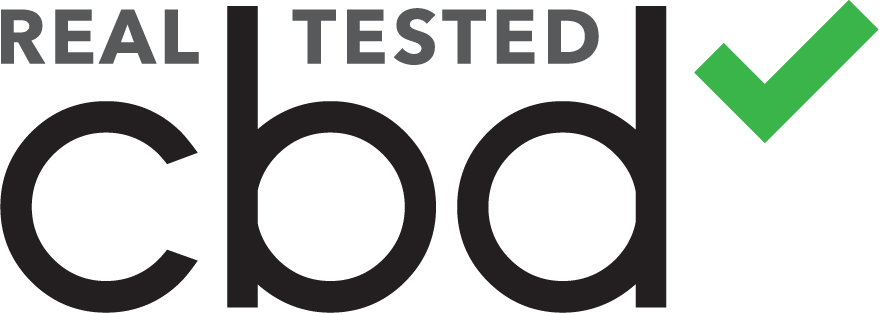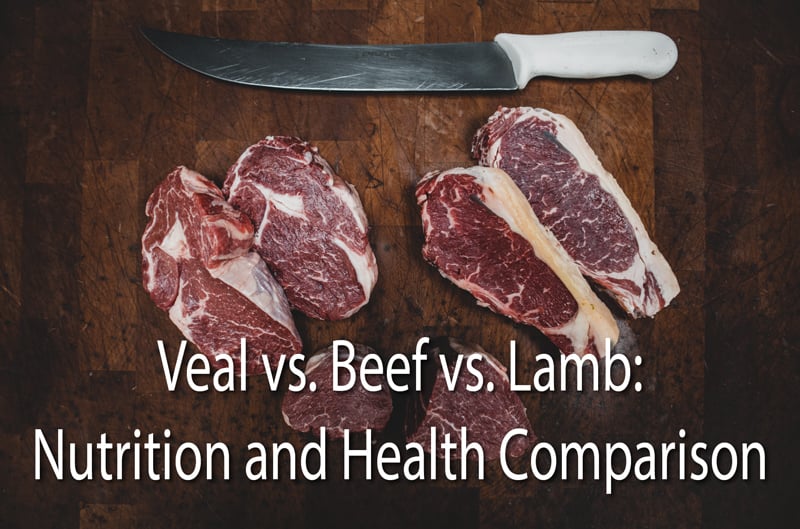Summary
Lamb meat is higher in Vitamin D, B1, B12, copper, and folate, while veal contains more Vitamin B3, B5, B6, and phosphorus. Beef is lower in cholesterol, whereas veal has lower fat and calorie numbers. All three meat types have no carbs and a GI of 0.
Introduction
Bovine meat is now one of the world’s most popular meats. This article will compare the nutritional values and health impacts of veal, beef, and lamb.
What’s The Actual Difference?
All three types of meat are classified as red meat. The primary difference between lamb, veal, and beef is the animal from which they are derived. Lamb is sheep meat, whereas most beef comes from young heifers and steers. Veal can come from sexed cattle, but most veal comes from young males.
Lamb and beef meat can be difficult to distinguish based on appearance alone. Beef and lamb are dark in color. Veal, on the other hand, is significantly lighter in color. Lamb’s flavor is frequently described as more vital and gamier. Veal, in particular, has a more tender texture and a more delicate flavor. When compared to beef, veal is also easier to digest. You can visit the “Veal vs. Beef” page for a complete comparison.
Nutrition
All three types of meat have similar nutritional profiles since all are red meat types.
Vitamins and Minerals
Lamb meat has more Vitamin D, Vitamin B1, Vitamin B12, folate, and Vitamin K than beef and veal.
Based on veal nutrition facts, it contains higher amounts of Vitamin B3, B5, and Vitamin B6 among these three types of meat.
Beef contains more iron, and zinc, while lamb provides more copper, and veal has more phosphorus. You can find the detailed mineral and vitamin comparison of beef and lamb on the “Beef vs. Lamb” page.
In addition, all meat types have equal amounts of calcium and potassium.
Micronutrients
All three types of meat have almost an equal amount of protein: 25g per 100g.
The number of calories in veal is lower than in beef and lamb. Veal has 172 calories, lamb has 294 calories, and beef has 250 calories per 100g.
Veal has nearly three times lower fat content than lamb. You can read more about the differences between lamb and veal in our “Veal vs. Lamb” article.
All three meat types have no carbs. Beef is lower in cholesterol than veal and lamb.
Glycemic Index
As all three types of meats do not have carbohydrates, they have a glycemic index calculated as 0.
Health Impact
Weight Loss Diets
Classic Keto suggests keeping your net carb intake between 20g and 30g per day (in the case of 2000 calorie diet).
Lamb, beef, and veal contain 0 net carbs and a good amount of fat, making them ideal for the Keto Diet [1].
Similarly, all three meat types can also be consumed in other low-carb diets, such as Atkins and Dukan (Attack phase).
Between these three types of meats, veal is the better choice for low-calorie and low-fat diets, as it has the lowest calories and fat.
Unprocessed lamb, veal, and beef are permitted on a Paleo diet.
A Mediterranean diet can also include limited amounts of lamb, veal, and beef.
Diabetes
Processed red meat has been linked to an increased risk of type 2 diabetes. This risk may be partly due to red meat’s heme iron and dietary cholesterol [2]. Because veal contains less heme iron and dietary cholesterol than beef and lamb, it is assumed that veal is the better choice for people with prediabetes or diabetic conditions.
According to one study, women who ate red meat twice a week had a nearly one-third higher risk of developing type 2 diabetes than women who ate less red meat [3].
Cancer
Red meat consumption, mainly processed red meat, has long been linked to an increased risk of several types of cancer. Consumption of red meat is associated with an increased risk of colon and rectal cancer, and evidence suggests it may also be associated with other cancers such as prostate and pancreatic cancer [4].
Furthermore, processed red meat increases the risk of esophageal squamous cell carcinoma and non-cardia stomach cancer [5].
Cardiovascular Health
Research has shown that eating processed red meat increases the risk of cardiovascular disease and all-cause mortality by a small amount [6].
These adverse effects are thought to be caused by trimethylamine N-oxide (TMAO), a chemical found in the blood after eating red meat [7].
Besides, red meat can be high in sodium. According to research [8], sodium consumption can increase the risk of high blood pressure, a significant cause of heart disease.
References
- https://www.ncbi.nlm.nih.gov/pmc/articles/PMC3945587/
- https://www.researchgate.net/publication/235376408
- https://pubmed.ncbi.nlm.nih.gov/30229313/
- https://www.wcrf.org/dietandcancer/exposures/meat-fish-dairy
- https://www.ncbi.nlm.nih.gov/pmc/articles/PMC3039705/
- https://www.bmj.com/content/371/bmj.m4141
- https://www.ncbi.nlm.nih.gov/pmc/articles/PMC9051033/
- https://pubmed.ncbi.nlm.nih.gov/33322108/
Advertising disclosure: We may receive compensation for some of the links in our stories. Thank you for supporting LA Weekly and our advertisers.


